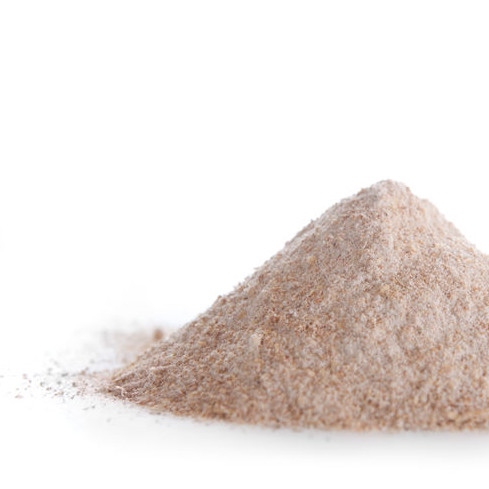Stone Ground Whole Wheat Flour
Also known as wholemeal flour
What is Stone Ground Whole Wheat Flour?
Stone ground whole wheat flour is made from grinding whole wheat kernels in grindmills or stone mills. It is often used in making textured artisan bread.1
This flour is typically used for bread manufacturing, but is not recommended for cakes and pastries. It is characterized by:
- High oil content
- Coarse particulation
- High protein content (11-14%)
Origin
Stone ground wheat flour has been produced since ancient times. Prior to the 1800s, over 22,000 gristmills were spread across the United States. With the discovery of electricity in the following century, new processing techniques evolved mainly roller mills which became the predominant flour milling method.1 The current resurgence of this kind of flour is mainly due to current organic food movement.1
Function
Ground whole wheat flour has several purposes in baked goods, primarily breads:1
- Provide structure: aids in defining shape and size and preventing products from collapsing due to its gluten content.
- Water absorption: aids in dough stability and handling.
- Flavor: provides a mild nutty flavor.
- Color: provides brownish color due to the bran present, and provides subtract for Maillard’s browning reaction.
- Nutritional value: provides carbohydrates, fiber, vitamins and minerals.
Nutrition
Typical composition of per 100 grams:2
| Component | Grams |
| Carbohydrates | 71.05 |
| Protein | 18.42 |
| Moisture | 7.28 |
| Lipids | 2.63 |
| Ash | 0.62 |
In addition to being a rich source of vitamins and minerals, stone ground wheat flour contains high levels of dietary fiber. Its large particle size may be beneficial in reducing the flour glycemic index.1,2
Commercial production
Stone ground whole wheat flour is typically produced through the following process:3
- Cleaning: impurities are removed from the whole wheat kernels
- Single-stream milling: whole kernels are compressed between two stones without separating any part of the grain
- Sifting: different particles sizes can be retained over several sieves
- Packaging: the flour is packaged for transportation
Application
Stone ground whole wheat flour is typically used for the manufacture of artisan and speciality breads and other baked goods. Some considerations to take into when working with stone ground whole wheat flour are:
- Slower gluten formation due to its coarse particulation, resulting in denser baked goods
- High levels of bran may negatively affect gluten proper development
- Bread dough made with this flour is less cohesive and resilient than those made with typical bread flour
- Breads made with 100% stone ground whole wheat flour are denser and coarser with darker color and stronger flavor
- Bakers may need to use additional amounts of water to compensate for the SGWF high water absorption
Regulations
Stone ground whole wheat flour is classified as GRAS by the FDA. It does not have a unique standard of identity but follows that of whole wheat flour.4
Similarly, in the European Union, there is no specific definition for stone ground whole wheat flour although different countries in the EU have their own.5
References
- Figoni, P. How Baking Works: Exploring The Fundamentals Of Baking Science. 3rd ed., John Wiley & Sons, Inc., 2011.
- U.S. Department of Agriculture, Agricultural Research Service. FoodData Central, 23 August 2018. https://fdc.nal.usda.gov/fdc-app.html#/food-details/367902/nutrients. Accessed 4 August 2020.
- Mir, S.A. , Manickavasagan, A and Shah, M.A. Whole Grains: Processing, Product Development, and Nutritional Aspects. CRC press, 2019.
- Food and Drug Administration (FDA). US Department of Health and Human Services. CFR Code of Federal Regulations Title 21, Part 184 Direct Food Substances Affirmed As Generally Recognized As Safe, https://www.accessdata.fda.gov/scripts/cdrh/cfdocs/cfcfr/CFRSearch.cfm?fr=137.200, Accessed 4 August 2020.
- “Whole Grain – EU Science Hub – European Commission”. EU Science Hub – European Commission, 2020, https://ec.europa.eu/jrc/en/health-knowledge-gateway/promotion-prevention/nutrition/whole-grain . Accessed 4 Aug 2020.


